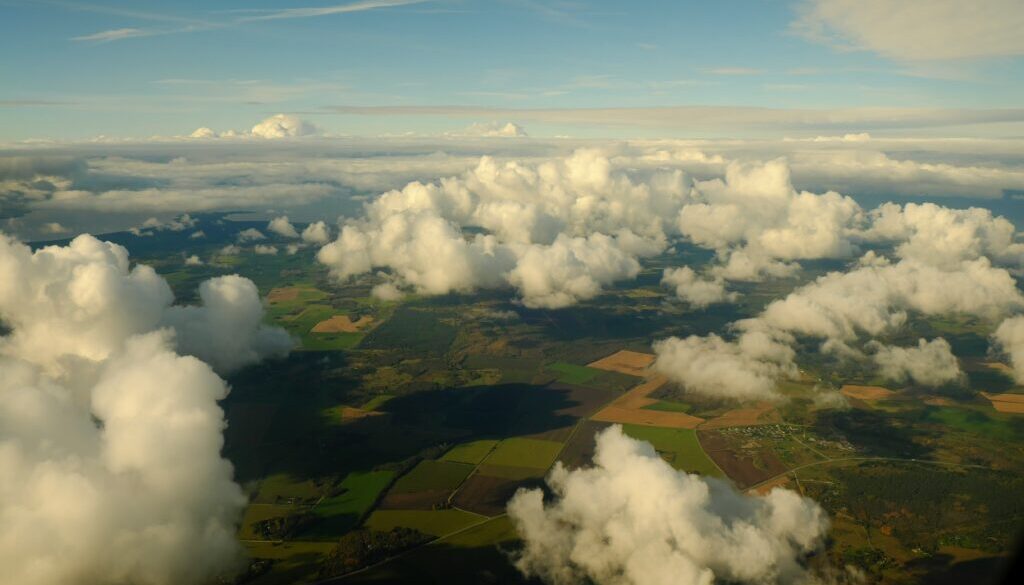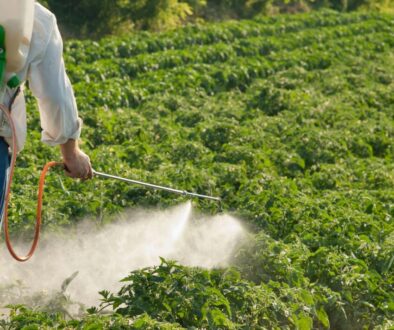New study finds potentially harmful pathogens traveling high in the atmosphere
By Douglas Main
A wide variety of fungi and bacteria, including E. coli and other potential human pathogens, have been found high in the atmosphere where they can travel for hundreds to thousands of miles before falling back to Earth, according to new research.
Air samples collected from between roughly a half mile and two miles in altitude (1 kilometer to 3 kilometers) near Tokyo, Japan, carried bacterial species known to be capable of causing health problems such as food poisoning and skin infections, researchers said.
The study, published this week in Proceedings of the National Academy of Sciences, reported that while most of the microbes detected were likely dead, testing confirmed more than ten species of microbes collected from high in the sky were alive. Those were particularly hardy strains, including several found to be antibiotic resistant. One of these, a type of ubiquitous bacteria not known to normally infect humans, was resistant to five different antibiotic drugs.
The discovery represents a “paradigm shift,” said Xavier Rodó, the study’s lead author and head of the health and climate program at the Barcelona Institute for Global Health. “From the public health standpoint it opens the door to really viewing the air and the atmosphere as an environment we need to pay attention to.”
The scientists used atmospheric measurements and computer models in concluding that most of the material found over Tokyo was coming from an agricultural region in northeast China, where row crops and livestock are raised. The study authors hypothesized that some of the bacteria, including the antibiotic-resistant ones, derived from sewage used to fertilize the land, and from the soil itself.
Widespread use of antibiotics with industrialized livestock production could plausibly introduce antibiotic resistance bacteria into the atmosphere as bits of soil and manure can be aerosolized and blow away on the wind, said David Smith, a NASA microbiologist who wasn’t involved in the study.
Besides microbes, the researchers also found significant quantities of many elements normally found in soil, such as sulfur and sodium, as well as aluminum, potassium, iron, and calcium.
They also detected zinc sulfate nanoparticles, which they hypothesized are coming from fertilizer use, as well as trace quantities of zirconium and hafnium, metals mined in China but not in Japan.
Researchers were quick to point out that there’s no evidence so far that these microorganisms are infectious. Most atmospheric microbes are killed by various stressors including UV rays and sunlight, and just because their DNA can be detected doesn’t mean they are viable, Smith said.
It’s also worth nothing that many of the potential pathogens are generally harmless for healthy people, and many are commonly found in the human gut and skin flora. But the situation could be different for those who are immunocompromised.
“Survivorship matters for any epidemiological consequences upon landing in a distant, downwind region,” he added. Whatever is blowing in the air high overhead has probably been doing so for a long time, so “no need to run and take cover.”
That being said, for infection to take place, it theoretically only requires one or a few live cells, said David Schmale, who studies airborne microbes at Virginia Tech University.
Other notable species detected in the air included C. difficile, known for severe intestinal infections often acquired in hospitals, and C. botulinum, which can cause a potentially fatal illness called botulism.
Jim Tiedje, an emeritus professor at Michigan State who has studied airborne microbes, also pointed at that even within a specific species such as E. coli, there are many strains with a vast range of characteristics that can make them highly pathogenic or virtually harmless, so more study is needed to understand the implications of these findings.
Researchers suspect that prior to sampling these particles above Japan, strong winds and a high pressure system carried the materials from northeast China high into the air, passing across the atmosphere’s so-called planetary boundary layer, allowing for long-distance transport. The samples were collected as they were moving downward toward the ground, according to the scientists’ calculations.
This long-distance transport is not unique to this area of the world — it happens regularly all over, including the United States.
Schmale expressed surprise by the identification of so many potential human pathogens in the air samples. He said that far-flung microbes and particles can be transported to the United States by dust clouds from Asia and Africa, as well as the polar and Pacific jet streams, hurricanes and other weather events.
In 2004, Hurricane Ivan almost certainly introduced a serious fungal pathogen called soybean rust from South America to Alabama and other Southeastern states, where it remained and spread.
Smith said these kinds of studies “reveal the resiliency of microbial life and should impress upon us how dynamic and tangled up the Earth system can be, from the surface to extreme heights in the atmosphere.”
“Winds connect us all,” he added. “What we do locally can potentially impact our downwind, distant neighbors.”




